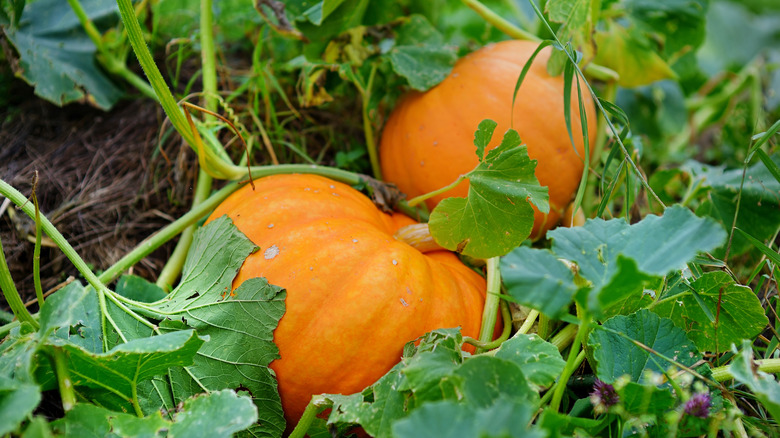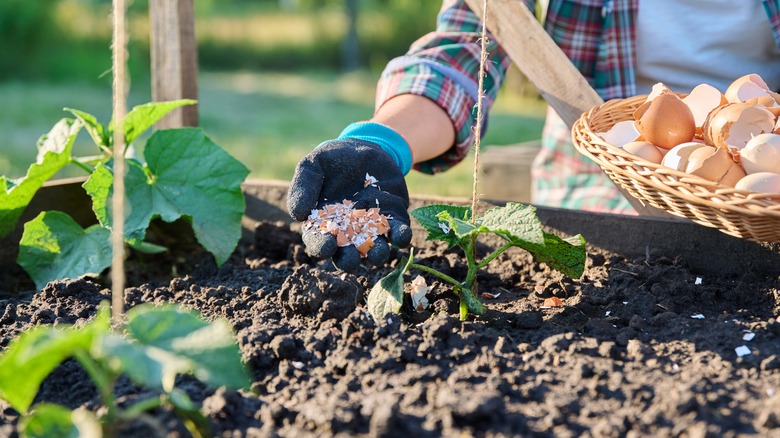Are Eggshells The Solution To Blossom End Rot In Pumpkins? Here's How To Tell
Blossom end rot is one of those diseases that you want to prevent when growing delicious pumpkins in your garden. This causes the development of a large gray or black spot on the part of the pumpkin that is opposite to the stem where the flower was. If left, the spot can grow and become dry and shrunken. Of course, this spoils the edibility and palatability of the fruit, especially if the affected area is then invaded by other microorganisms. You might have heard the common solution to preventing blossom end rot is to use eggshells, but is this really the answer to the problem?
Essentially, the cause of blossom end rot is a lack of available calcium in the soil with the emphasis on "available." You see, your soil may contain enough calcium to prevent blossom end rot, but the roots of your pumpkin plants might not be able to absorb this micronutrient. This could be due to inconsistent watering where the soil is either too dry or too wet or low soil pH. Even the use of excessive nitrogen fertilizers could inhibit the uptake of calcium from the soil. You might also have heard that Epsom salt can be useful in preventing blossom end rot due to its high magnesium content, but too much magnesium can also inhibit the uptake of calcium, so Epsom salt may or may not be good for your pumpkin plants. Before you crush up those eggshells and place them around your pumpkin plants, you need to investigate the real cause of your blossom end rot problem.
How to determine whether you need to add calcium to your soil
Ideally, you first want to establish whether your soil contains sufficient calcium or not by doing a simple soil test. There are home soil testing kits that you can purchase or you can take a soil sample and send this off to a laboratory to do the testing for you. At the same time, you also want to test the soil pH as the ideal for preventing blossom end rot is between 6.3 to 6.8.
If you find that there's a calcium deficiency in your soil, then eggshells can definitely help solve this problem but you need to pulverize them first before adding them to the soil. This is because crushed eggshells take a long time to break down and release their calcium into the soil, but if you grind them down into a powder using something like a coffee grinder, the calcium will be available to your pumpkin plants much more readily. Of course, you could add gypsum or pulverized limestone instead if there's a lack of calcium in the soil. At the same time, you also want to ensure that your plants receive consistent moisture so that they can make use of the calcium in the soil. If you're not sure how often you should be watering the pumpkins in your garden, as a general rule, watering deeply once or twice a week and covering the soil surface with mulch will ensure that the soil moisture is adequate. And, while you're saving up those eggshells, you might want to explore other expert ways to use eggs in your garden.

